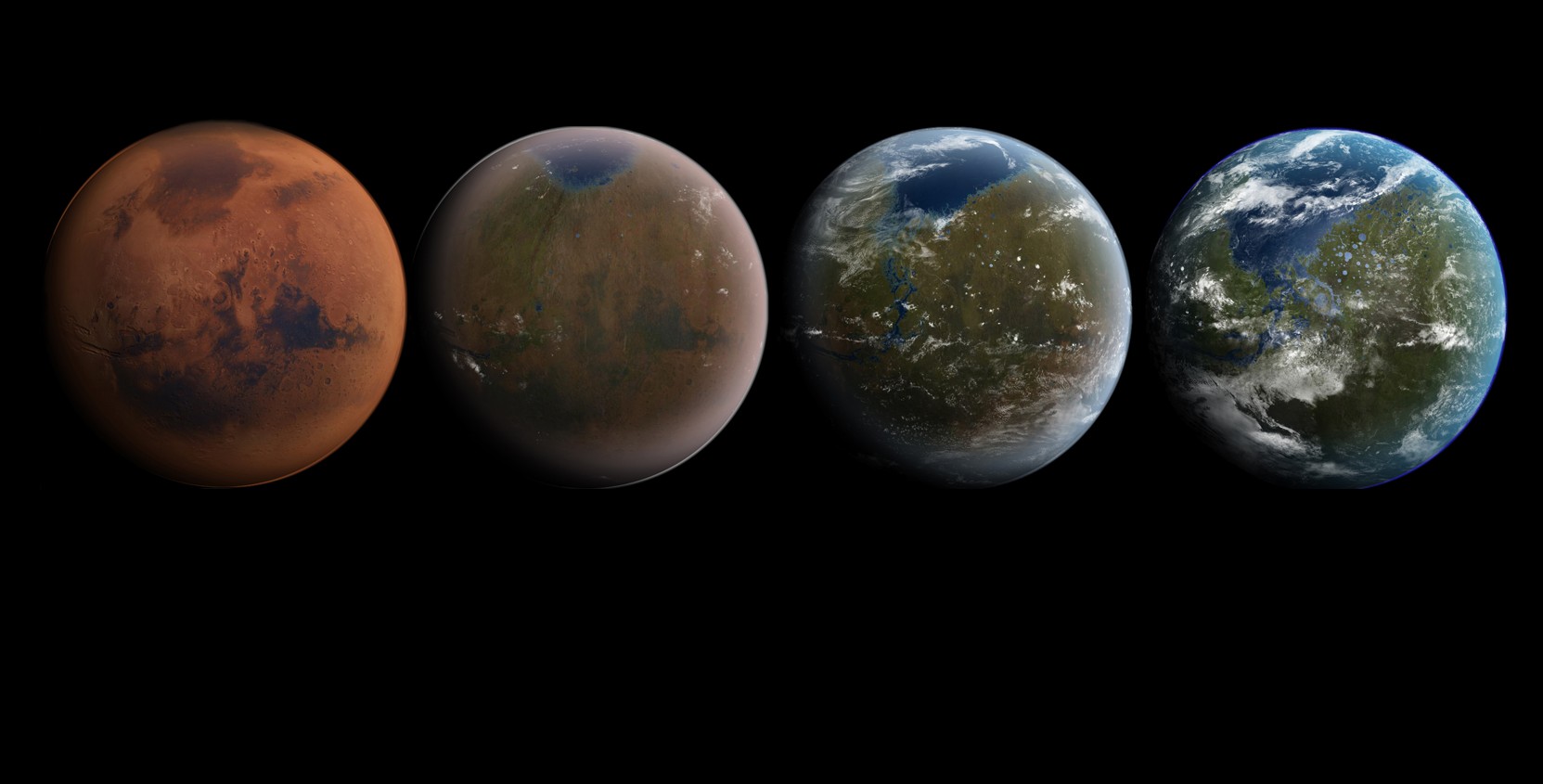
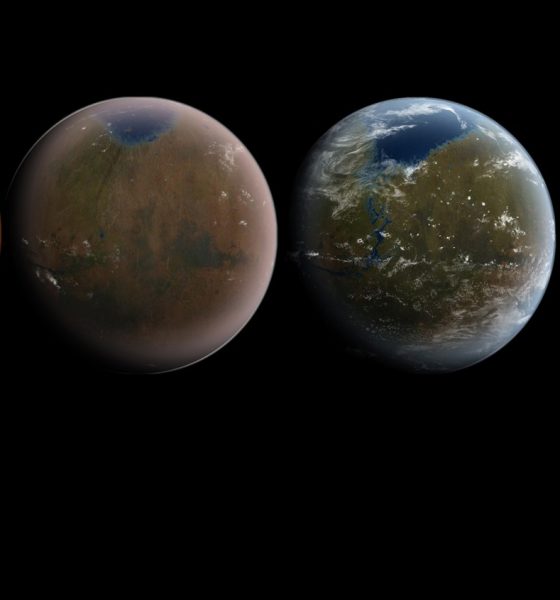
News
Mars as an Earth-like planet in the past not likely, according to new study
Many of Earth’s citizens have their eyes set on Mars as a planet prime for human colonization, and much of this optimism is based on the idea that the now barren and frozen planet was once full of water and green plant life. Warming things up, as SpaceX CEO Elon Musk has posited on numerous occasions, would theoretically bring Mars back to a more Earth-like state. However, a recent study published in the journal Nature Geoscience has thrown doubts onto this restorative thinking. Rather than a world shaped by flowing rivers and lakes on the surface, the publication suggests that the red planet gained most of its liquid water-suggestive features from moving glaciers and rivers flowing beneath them.
“The southern highlands of Mars are dissected by hundreds of valley networks, which are evidence that water once sculpted the surface… Previous interpretations of the geological record require precipitation and surface water runoff to form the valley networks, in contradiction with climate simulations that predict a cold, icy ancient Mars,” the paper’s abstract states. “Here we present a global comparative study of valley network morphometry…with physical models of fluvial [river-formed], groundwater sapping [erosion] and glacial and subglacial erosion. We found that valley formation involved all these processes, but that subglacial and fluvial erosion are the predominant mechanisms.”
In other words, as theorized in this study by Anna Grau Galofre et al., titled “Valley formation on early Mars by subglacial and fluvial erosion,” Mars’ geographical features were not likely formed by rainfall from an environment similar to ours on Earth. The planet has always been much too cold to support the weather patterns needed to be possible. Of course, that doesn’t mean terraforming is out of the picture, just that it might be a newer state of existence for Mars than we thought.
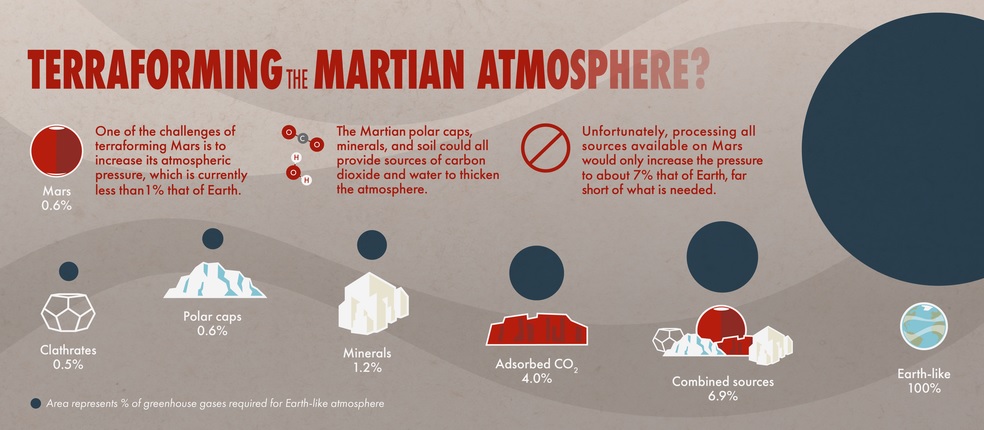
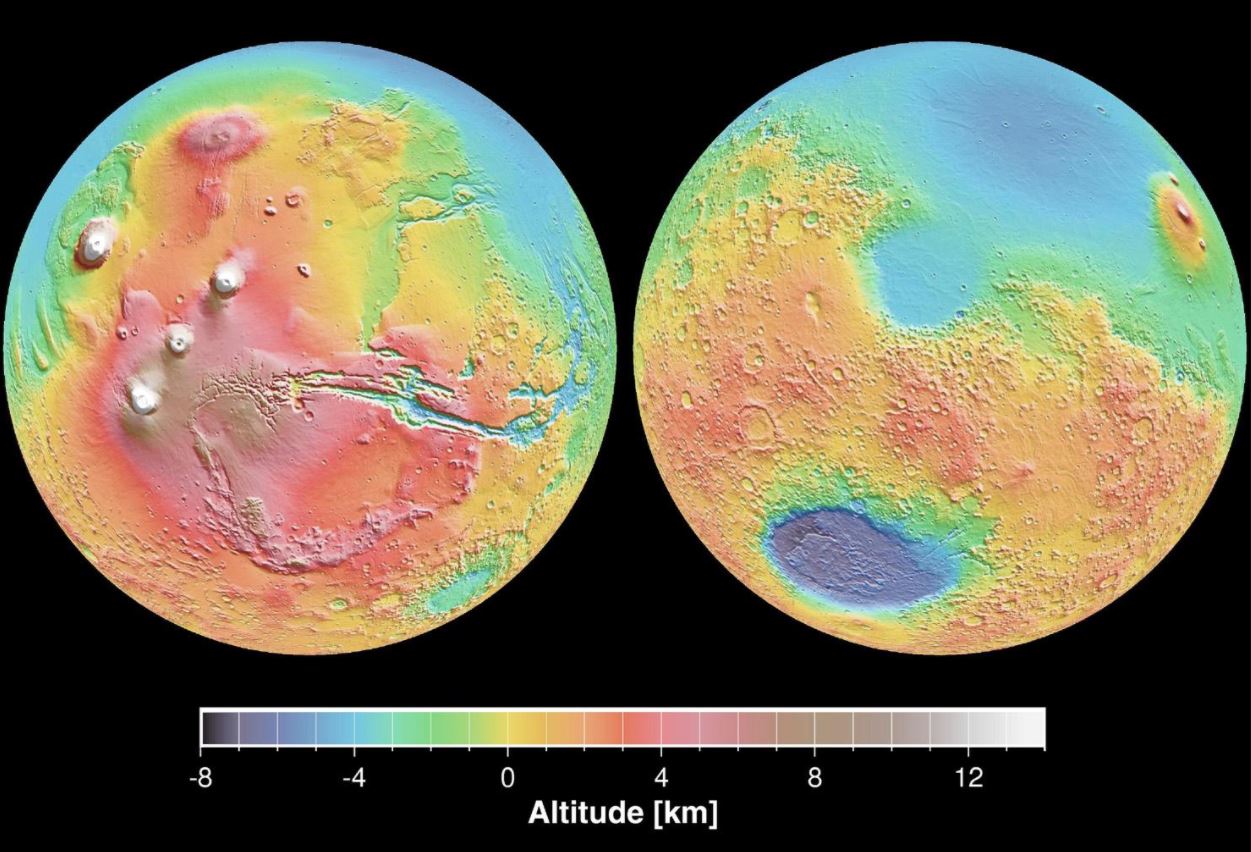
Notably, Elon Musk took to Twitter this week to discuss his hopes for making things more human-friendly, even if green will be a new color for the planet. “There’s a lot of frozen CO2 & H2O on Mars. Heating the planet will densify the atmosphere. It’s solvable,” Musk tweeted in response to a discussion on the planet’s topography. The CEO has previously explained his plans for making this happen – using nuclear bombs.
“Nuke Mars! T-shirt soon,” he wrote on Twitter last year, subsequently inspiring dozens of shirt designs with the motto to go on sale. “Nuke Mars refers to a continuous stream of very low fallout nuclear fusion explosions above the atmosphere to create artificial suns. Much like our sun, this would not cause Mars to become radioactive,” he later explained. SpaceX currently sells coffee mugs with a Mars image that terraforms when heated in a show of enthusiasm for Musk’s plans.
There’s a lot of frozen CO2 & H2O on Mars. Heating the planet will densify the atmosphere. It’s solvable.
— Elon Musk (@elonmusk) August 25, 2020
Another important part of the ‘green’ Mars theory is that it bodes well for the search for ancient extraterrestrial life. NASA’s newest rover Perseverance, currently on its way to the red planet, will be exploring with astrobiology as its main mission. The rover’s landing destination will be a 28-mile-wide crater named Jezero (translation: “lake”) thought to have held water billions of years ago. NASA’s 2012 Curiosity mission found that Mars overall was rich in material that could have potentially supported microbial life, and the Perseverance mission will collect the evidence to back up that claim. That evidence, in the form of samples, will be brought back to Earth in a future mission.
A video published by Anton Petrov gives some further perspective and visuals surrounding this recent study about Mars’ icy vs. green past. You can watch it below:

News
Tesla partners with Lemonade for new insurance program
Tesla recently was offered “almost free” coverage for Full Self-Driving by Lemonade’s Shai Wininger, President and Co-founder, who said it would be “happy to explore insuring Tesla FSD miles for (almost) free.”
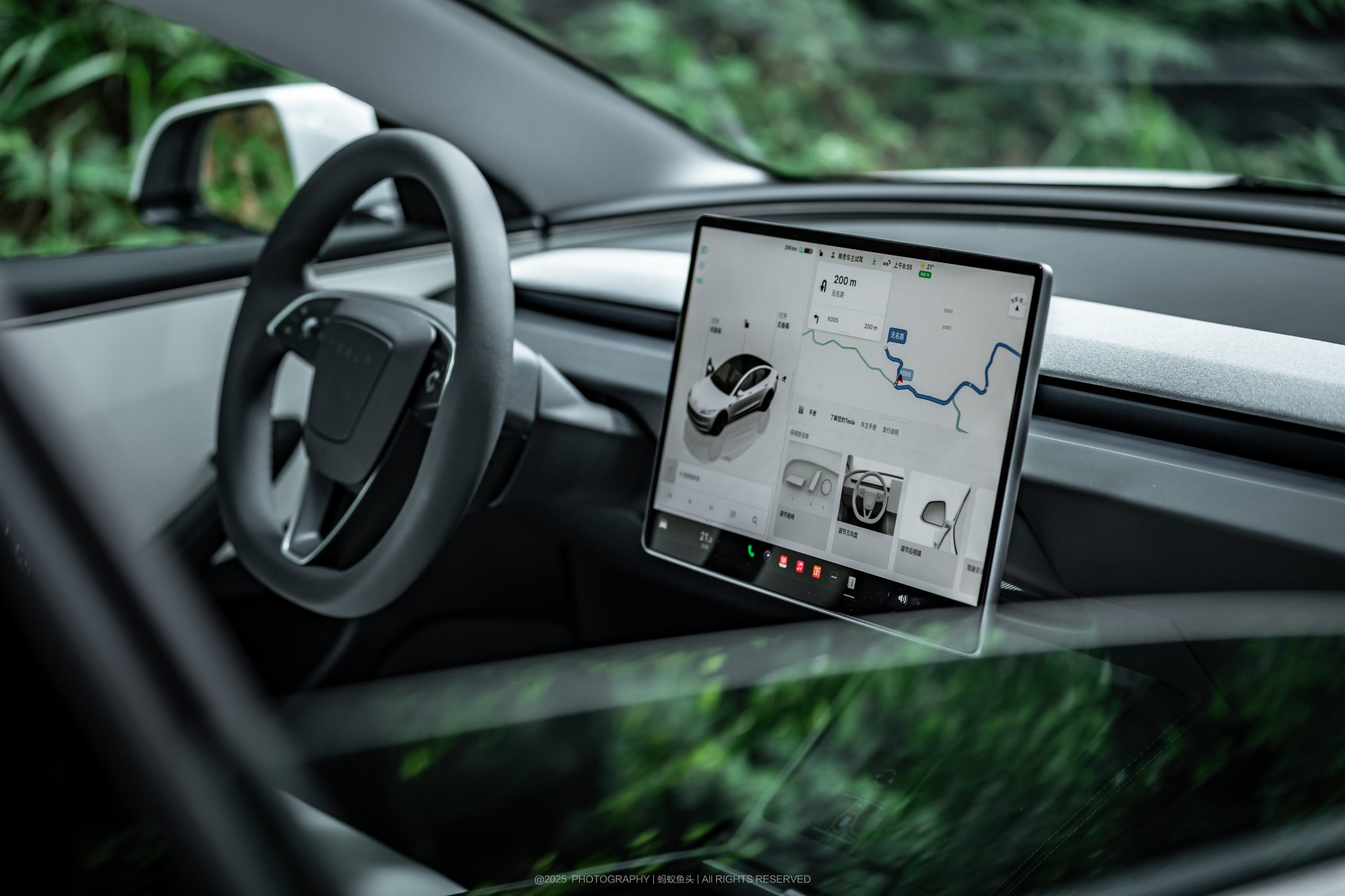
Tesla owners in California, Oregon, and Arizona can now use Lemonade Insurance, the firm that recently said it could cover Full Self-Driving miles for “almost free.”
Lemonade, which offered the new service through its app, has three distinct advantages, it says:
- Direct Connection for no telematics device needed
- Better customer service
- Smarter pricing
The company is known for offering unique, fee-based insurance rates through AI, and instead of keeping unclaimed premiums, it offers coverage through a flat free upfront. The leftover funds are donated to charities by its policyholders.
On Thursday, it announced that cars in three states would be able to be connected directly to the car through its smartphone app, enabling easier access to insurance factors through telematics:
Lemonade customers who own @Tesla vehicles in California, Oregon, and Arizona can now connect their cars directly to the Lemonade app! ⚡🚘
Direct connection = no telematics device needed 📵
Better customer experience 💃
Smarter pricing with Lemonade 🧠This is a game-changer… pic.twitter.com/jbabxZWT4t
— Lemonade (@Lemonade_Inc) December 11, 2025
Tesla recently was offered “almost free” coverage for Full Self-Driving by Lemonade’s Shai Wininger, President and Co-founder, who said it would be “happy to explore insuring Tesla FSD miles for (almost) free.”
The strategy would be one of the most unique, as it would provide Tesla drivers with stable, accurate, and consistent insurance rates, while also incentivizing owners to utilize Full Self-Driving for their travel miles.
Tesla Full Self-Driving gets an offer to be insured for ‘almost free’
This would make FSD more cost-effective for owners and contribute to the company’s data collection efforts.
Data also backs Tesla Full Self-Driving’s advantages as a safety net for drivers. Recent figures indicate it was nine times less likely to be in an accident compared to the national average, registering an accident every 6.36 million miles. The NHTSA says a crash occurs approximately every 702,000 miles.
Tesla also offers its own in-house insurance program, which is currently offered in twelve states so far. The company is attempting to enter more areas of the U.S., with recent filings indicating the company wants to enter Florida and offer insurance to drivers in that state.
News
Tesla Model Y gets hefty discounts and more in final sales push

Tesla Model Y configurations are getting hefty discounts and more benefits as the company is in the phase of its final sales push for the year.
Tesla is offering up to $1,500 off new Model Y Standard trims that are available in inventory in the United States. Additionally, Tesla is giving up to $2,000 off the Premium trims of the Model Y. There is also one free upgrade included, such as a paint color or interior color, at no additional charge.
NEWS: Tesla is now offering discounts of up to $1,500 off new Model Y Standard vehicles in U.S. inventory. Discounts of up to $2,000 are also being offered on Model Y Premiums.
These discounts are in addition to the one free upgrade you get (such as Diamond Black paint) on… pic.twitter.com/L0RMtjmtK0
— Sawyer Merritt (@SawyerMerritt) December 10, 2025
Tesla is hoping to bolster a relatively strong performance through the first three quarters of the year, with over 1.2 million cars delivered through the first three quarters.
This is about four percent under what the company reported through the same time period last year, as it was about 75,000 vehicles ahead in 2024.
However, Q3 was the company’s best quarterly performance of all time, and it surged because of the loss of the $7,500 EV tax credit, which was eliminated in September. The imminent removal of the credit led to many buyers flocking to Tesla showrooms to take advantage of the discount, which led to a strong quarter for the company.
2024 was the first year in the 2020s when Tesla did not experience a year-over-year delivery growth, as it saw a 1 percent slide from 2023. The previous years saw huge growth, with the biggest coming from 2020 to 2021, when Tesla had an 87 percent delivery growth.
This year, it is expected to be a second consecutive slide, with a drop of potentially 8 percent, if it manages to deliver 1.65 million cars, which is where Grok projects the automaker to end up.
Tesla will likely return to its annual growth rate in the coming years, but the focus is becoming less about delivery figures and more about autonomy, a major contributor to the company’s valuation. As AI continues to become more refined, Tesla will apply these principles to its Full Self-Driving efforts, as well as the Optimus humanoid robot project.
Will Tesla thrive without the EV tax credit? Five reasons why they might
These discounts should help incentivize some buyers to pull the trigger on a vehicle before the year ends. It will also be interesting to see if the adjusted EV tax credit rules, which allowed deliveries to occur after the September 30 cutoff date, along with these discounts, will have a positive impact.
News
Tesla FSD’s newest model is coming, and it sounds like ‘the last big piece of the puzzle’
“There’s a model that’s an order of magnitude larger that will be deployed in January or February 2026.”

Tesla Full Self-Driving’s newest model is coming very soon, and from what it sounds like, it could be “the last big piece of the puzzle,” as CEO Elon Musk said in late November.
During the xAI Hackathon on Tuesday, Musk was available for a Q&A session, where he revealed some details about Robotaxi and Tesla’s plans for removing Robotaxi Safety Monitors, and some information on a future FSD model.
While he said Full Self-Driving’s unsupervised capability is “pretty much solved,” and confirmed it will remove Safety Monitors in the next three weeks, questions about the company’s ability to give this FSD version to current owners came to mind.
Musk said a new FSD model is coming in about a month or two that will be an order-of-magnitude larger and will include more reasoning and reinforcement learning.
He said:
“There’s a model that’s an order of magnitude larger that will be deployed in January or February 2026. We’re gonna add a lot of reasoning and RL (reinforcement learning). To get to serious scale, Tesla will probably need to build a giant chip fab. To have a few hundred gigawatts of AI chips per year, I don’t see that capability coming online fast enough, so we will probably have to build a fab.”
NEWS: Elon Musk says FSD Unsupervised is “pretty much solved at this point” and that @Tesla will be launching Robotaxis with no safety monitors in about 3 weeks in Austin, Texas. He also teased a new FSD model is coming in about 1-2 months.
“We’re just going through validation… https://t.co/Msne72cgMB pic.twitter.com/i3wfKX3Z0r
— Sawyer Merritt (@SawyerMerritt) December 10, 2025
It rings back to late November when Musk said that v14.3 “is where the last big piece of the puzzle finally lands.”
With the advancements made through Full Self-Driving v14 and v14.2, there seems to be a greater confidence in solving self-driving completely. Musk has also personally said that driver monitoring has been more relaxed, and looking at your phone won’t prompt as many alerts in the latest v14.2.1.
This is another indication that Tesla is getting closer to allowing people to take their eyes off the road completely.
Along with the Robotaxi program’s success, there is evidence that Tesla could be close to solving FSD. However, it is not perfect. We’ve had our own complaints with FSD, and although we feel it is the best ADAS on the market, it is not, in its current form, able to perform everything needed on roads.
But it is close.
That’s why there is some legitimate belief that Tesla could be releasing a version capable of no supervision in the coming months.
All we can say is, we’ll see.








